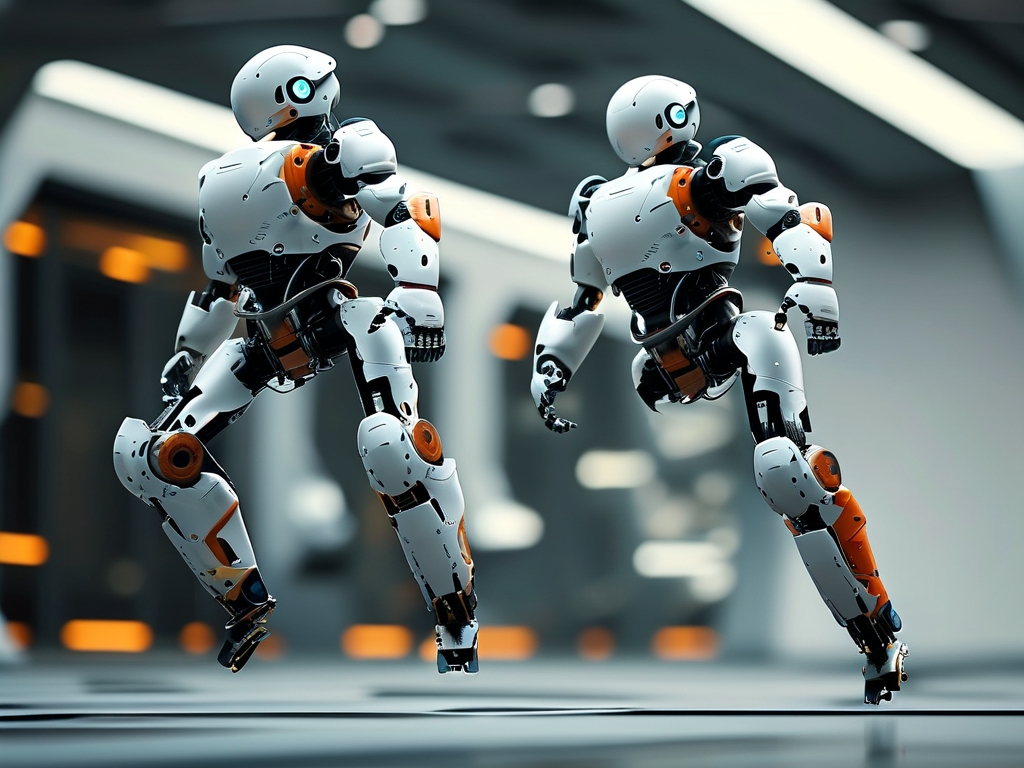Robot gait technology, a cornerstone of modern robotics, bridges the gap between biological inspiration and engineering precision. This field focuses on enabling machines to move efficiently, adaptively, and stably across diverse terrains-a challenge that has captivated researchers for decades. By mimicking the locomotion of humans and animals, engineers strive to create robots capable of performing tasks in environments ranging from industrial warehouses to disaster zones. But how exactly do robots "learn" to walk, run, or crawl? Let's dive into the science behind their movements.

The Biological Blueprint
Nature has spent millions of years perfecting locomotion. Human bipedalism, insect hexapodal coordination, and quadrupedal galloping in mammals all offer templates for roboticists. For instance, Boston Dynamics' Spot robot borrows from the biomechanics of dogs, using compliant limbs and dynamic balance to navigate uneven terrain. Similarly, Honda's ASIMO replicated human-like bipedal walking by studying joint coordination and center-of-mass shifts. These biological models provide foundational principles, such as energy efficiency and adaptability, which engineers translate into algorithms and mechanical designs.
Key Components of Robot Gait Systems
-
Actuators and Sensors: Robots rely on actuators (e.g., electric motors, hydraulic systems) to generate movement and sensors (e.g., accelerometers, gyroscopes) to monitor posture and terrain. For example, MIT's Cheetah Robot uses custom-designed motors to achieve sprints while maintaining balance through real-time force feedback.
-
Control Algorithms: Central to gait technology are control systems that process sensor data and adjust movements. Zero Moment Point (ZMP) algorithms, used in bipedal robots, ensure stability by calculating the point where gravitational and inertial forces balance. Meanwhile, reinforcement learning allows robots like OpenAI's Dactyl to self-optimize gait patterns through trial and error.
-
Mechanical Design: The physical structure-such as leg configuration, joint flexibility, and weight distribution-determines a robot's mobility. Quadrupeds often prioritize low centers of gravity, while humanoids require complex hip and knee articulation. Soft robotics, using materials like silicone, introduces compliant movements for delicate tasks.
Challenges in Gait Development
Creating stable and versatile gaits involves overcoming significant hurdles:
- Terrain Adaptation: Robots must adjust to surfaces like ice, sand, or stairs. NASA's RoboSimian, designed for disaster response, uses multi-limbed crawling to traverse rubble.
- Energy Efficiency: Mimicking the energy recovery of human tendons, projects like the AMP-Foot 3.0 prototype integrate elastic components to reduce power consumption.
- Real-Time Processing: Balancing computational speed with precision remains critical. Edge computing and neuromorphic chips are emerging solutions to enhance responsiveness.
Breakthroughs and Applications
Recent advancements have expanded the scope of robot gait technology:
- Boston Dynamics' Atlas: This humanoid robot performs parkour-like maneuvers, combining perception, planning, and dynamic control to jump and backflip.
- Exoskeletons: Devices like ReWalk use gait analysis to assist individuals with mobility impairments, restoring natural walking patterns.
- Space Exploration: NASA's LEGS (Limbed Excursion Mechanical System) rover prototype employs adaptive gaits for low-gravity environments on moons or asteroids.
The Future of Robot Locomotion
The next frontier lies in AI-driven adaptability. Researchers are integrating vision systems with deep learning to enable robots to "improvise" gaits for unseen obstacles. Swarm robotics, where multiple units collaborate, also promises new possibilities-imagine insect-like robots assembling structures or exploring Mars collectively.
However, ethical and practical questions linger. How do we ensure safe human-robot interaction? Can gait technology scale economically for widespread use? As the line between biological and mechanical motion blurs, these challenges will shape the evolution of robotics.
In , robot gait technology is not just about making machines walk-it's about redefining mobility itself. By merging biology, mechanics, and AI, engineers are crafting a future where robots move with the grace, resilience, and intelligence of living organisms.









